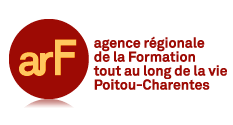 Interview | Philippe Hayat, pour un new deal entrepreneurial
Interview | Philippe Hayat, pour un new deal entrepreneurial
Philippe
Hayat, président de
100.000 entrepreneurs, est engagé pour le développement de l’entrepreneuriat en France. Il vient de remettre un
rapport à la ministre des PME, Fleur Pellerin, intitulé "
Pour un new deal entrepreneurial". La Fondation iFRAP l’a interviewé.
Fondation iFRAP : Vous faites des propositions pour que le financement en amorçage des entreprises soit plus important grâce à des mesures fiscales incitatives (notamment le Madelin que vous proposez, comme nous, de déplafonner). Pensez-vous que ces mesures aient des chances de passer d’ici 2017 ?
Philippe
Hayat : Je crois malheureusement qu’on est revenu dans cette vieille querelle qui consiste à opposer le capital et le travail. En écoutant les responsables politiques s’exprimer sur ce sujet, il apparaît qu’ils jugent inconcevable de voir
le travail moins bien rémunéré que le capital, alors même que celui-ci présente un risque bien supérieur. Télécharger
le rapport : "Pour un new deal entrepreneurial", de Philippe Hayat, octobre 2012. Suite de l'interview...
Proposition 4: Généraliser les filières entrepreneuriat (de la formation à la création effective) dans l'enseignement supérieur pp.21-23 du
rapport Constats : Enseignement supérieur en entrepreneuriat inégal et timide
L’enseignement de l’entrepreneuriat dans l’enseignement supérieur, dont sont issus 94% des créateurs d’entreprises innovantes (Oséo, 10 ans de création d’entreprises innovantes, janvier 2012), est fondamental. Seulement 30% des entrepreneurs français déclarent avoir bénéficié d’un programme de promotion de l’entrepreneuriat pendant leurs études supérieures, contre 62% aux USA, 70% au Brésil, 64% au Canada, 50% en Allemagne (Baromètre Ernst & Young, octobre 2011).
Le mouvement a démarré il y a une quinzaine d’années. A ce jour, une filière entrepreneuriat structurée n’existe que dans un certain nombre de grandes écoles de commerce et d’ingénieur. Dans les grandes écoles, 68% des élèves pensent qu’ils seront formés à l’entrepreneuriat pendant leurs études et 56% ont accès à un interlocuteur pour les renseigner sur le sujet, contre respectivement 21% et 25% pour les étudiants d’université (sondage Ipsos, novembre 2009). A quelques exceptions près, l’enseignement de l’entrepreneuriat est encore inexistant dans l’université et la plupart des formations post bac.
Peu de jeunes entrepreneurs à la sortie des études Même dans les grandes écoles, le nombre de créations d’entreprise annuel ne dépasse pas 5 à 10% de l’effectif d’une promotion. On ne dénombre que 2 % de jeunes diplômés de moins de 25 ans parmi les créateurs d’entreprise innovante (Oséo, 10 ans de création d’entreprises innovantes, 2012).
D’une manière générale, les jeunes de moins de 30 ans constituent une minorité au sein de la population entrepreneuriale (20% des créateurs, 11% des lauréats du concours MESR/Oseo 2011). Les freins à la création d’entreprise restent l’aversion au risque en premier lieu, et quelques idées reçues tenaces (« je ne peux pas entreprendre car je n’ai pas d’idée, pas d’argent, pas d’expérience, pas de réseau… »).
Naissance des pôles Entrepreneuriat-Etudiants
Depuis 2010, des « Pôles Entrepreneuriat-Etudiants » (PEE) se sont constitués. Ils sont au nombre de 23 à ce jour. La plupart s’inscrit dans l’organisation des Pôles de Recherche et d’Enseignement Supérieur (PRES), afin de sensibiliser, former et accompagner les étudiants dans leur réflexion et leurs actes entrepreneuriaux. Ils peuvent devenir la clé de voûte de l’action entrepreneuriale dans l’enseignement supérieur.
Objectif : Permettre à tout étudiant de l’enseignement supérieur de créer son entreprise sur son campus.
Il s’agit de proposer un enseignement de l’entrepreneuriat structuré, de la sensibilisation à la création, dans toutes les filières de l’enseignement supérieur, au cours desquels les étudiants pourront mûrir leur projet en trois phases :
1. Sensibilisation et apprentissage des concepts-clés.
2. Etude d’un projet entrepreneurial.
3. Création de l’entreprise.
Recommandations : - Développer dans les programmes de chaque école, université et formation post-bac deux modules de cours à minima :
o Sensibilisation à l’entrepreneuriat : rencontres avec des entrepreneurs de tous horizons, qui permettent de mieux cerner la motivation des étudiants et l’adéquation de leur personnalité avec les exigences du métier. Enseignement de la « boîte à outils » indispensable pour entreprendre (gestion de trésorerie, notions pratiques du droit des affaires, techniques de ventes et de marketing, utilisation des nouvelles technologies…)
o Analyse d’un « business plan » : définition d’un projet, positionnement sur son marché, évaluation des hypothèses d’activité et de charges, construction du plan de développement.
- Mettre en place au sein de chaque Pôle Entrepreneuriat-Etudiant :
o Un incubateur mutualisé, au bénéfice de toutes les structures d’enseignement du Pôle, offrant les moyens techniques nécessaires à la création d’entreprises, une assistance au jour le jour et le tutorat d’un entrepreneur expérimenté. En faire un lieu d’effervescence entrepreneuriale, ouvert, décontracté et propice à l’innovation (par exemple sur le modèle du St Oberholz Café de Berlin).
o Un fonds d’amorçage abondé par les anciens des écoles et universités du Pôle.
o Une animation entrepreneuriale : concours de création d’entreprises, clubs d’entrepreneurs, junior entreprises, conférences d’entrepreneurs, fêtes de l’entrepreneur, rencontres entrepreneurs-investisseurs…
o Un campus de recrutement de stagiaires ou de jeunes diplômés du Pôle par les entreprises créées par les anciens du Pôle.
Acteurs : Ministère de l’Enseignement Supérieur et de la Recherche, DGCIS, direction des Universités et des Ecoles, Conférence des Grandes Ecoles et Universités, Pôles Entrepreneuriat-Etudiants, associations et réseaux locaux d’entrepreneurs, chambres de commerce et d’industrie, Rétis…
 Συνέντευξη | Hayat, μια νέα συμφωνία για την επιχειρηματική
Συνέντευξη | Hayat, μια νέα συμφωνία για την επιχειρηματική
Philippe Hayat, Πρόεδρος του 100.000 εργολάβους, έχει δεσμευτεί για την ανάπτυξη της επιχειρηματικότητας στη Γαλλία. Έχει υποβληθεί μόνο μια έκθεση προς τον Υπουργό για τις ΜΜΕ, λουλούδι Pellerin, με τίτλο "Προς μια νέα επιχειρηματική συμφωνία." Ίδρυμα iFRAP του συνέντευξη. Περισσότερα...Universities, however, need more support in their efforts to recruit and retain those students, says Principal Munroe-Blum.









/https%3A%2F%2Fprofilepics.canalblog.com%2Fprofilepics%2F1%2F0%2F1076071.jpg)